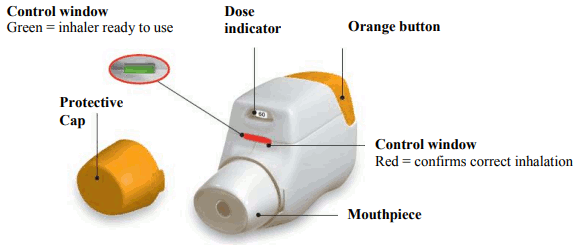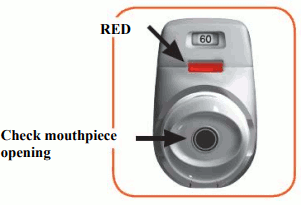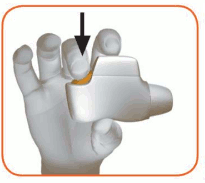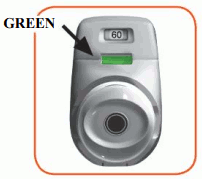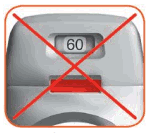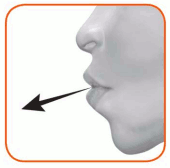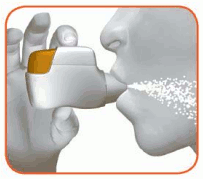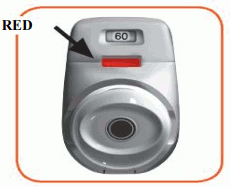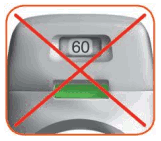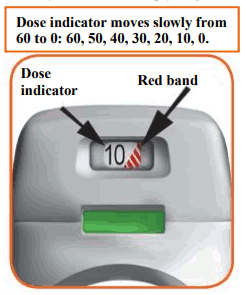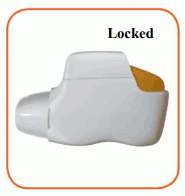DUAKLIR GENUAIR Inhalation powder Ref.[51467] Active ingredients: Aclidinium Eformoterol Formoterol and Aclidinium bromide
Source: European Medicines Agency (EU) Revision Year: 2023 Publisher: Covis Pharma Europe B.V., Gustav Mahlerplein 2, 1082MA Amsterdam, The Netherlands
4.1. Therapeutic indications
Duaklir Genuair is indicated as a maintenance bronchodilator treatment to relieve symptoms in adult patients with chronic obstructive pulmonary disease (COPD).
4.2. Posology and method of administration
Posology
The recommended dose is one inhalation twice daily.
If a dose is missed, it should be taken as soon as possible and the next dose should be taken at the usual time. A double dose should not be taken to make up for a forgotten dose.
Elderly
No dose adjustments are required in elderly patients (see section 5.2).
Renal impairment
No dose adjustments are required in patients with renal impairment (see section 5.2).
Hepatic impairment
No dose adjustments are required in patients with hepatic impairment (see section 5.2).
Paediatric population
There is no relevant use of Duaklir Genuair in children and adolescents (under 18 years of age) for the indication of COPD.
Method of administration
For inhalation use.
Patients should be instructed on how to administer the product correctly as the Genuair inhaler may work differently from inhalers the patients may have used previously. It is important to instruct the patients to read the Instructions for Use in the Package Leaflet.
Before first use, the sealed bag should be teared open, and the inhaler removed. The bag and the desiccant should be thrown away.
For instructions for use, see section 6.6.
4.9. Overdose
There is limited evidence on the management of overdose with Duaklir Genuair. High doses of Duaklir Genuair may lead to exaggerated anticholinergic and/or β2-adrenergic signs and symptoms; the most frequent of which include blurred vision, dry mouth, nausea, muscle spasm, tremor, headache, palpitations and hypertension.
Duaklir Genuair should be discontinued in case of overdose. Supportive and symptomatic treatment is indicated.
6.3. Shelf life
3 years.
To be used within 60 days of opening the bag.
6.4. Special precautions for storage
This medicinal product does not require any special temperature storage conditions.
Keep the Genuair inhaler protected inside the sealed bag until the administration period starts.
6.5. Nature and contents of container
The Genuair inhaler is a multicomponent device made of plastic (polycarbonate, acrylonitrilebutadiene-styrene, polyoxymethylene, polyester-butylene-terephthalate, polypropylene, polystyrene) and stainless steel. It is white-coloured with an integral dose indicator and an orange dosage button. The mouthpiece is covered with a removable orange protective cap. The inhaler is supplied sealed in a protective aluminium laminate bag containing a silica gel desiccant sachet, placed in a cardboard carton.
Carton containing 1 inhaler with 30 doses.
Carton containing 1 inhaler with 60 doses.
Carton containing 3 inhalers each with 60 doses.
Not all pack sizes may be marketed.
6.6. Special precautions for disposal and other handling
Any unused medicinal product or waste material should be disposed of in accordance with local requirements.
Instructions for Use
Getting Started
Read these Instructions for Use before you start using the medicine.
Become familiar with the parts of your Genuair inhaler.
Figure A:
Before use:
a. Before first use, tear open the sealed bag and remove the inhaler. Throw away the bag and the desiccant.
b. Do not press the orange button until you are ready to take a dose.
c. Pull off the cap by lightly squeezing the arrows marked on each side (Figure B).
Figure B:
STEP 1: Prepare your dose
1.1 Look in the opening of the mouthpiece and make sure nothing is blocking it (Figure C).
1.2 Look at the control window (should be red, Figure C).
Figure C:
1.3 Hold the inhaler horizontally with the mouthpiece facing you and the orange button on top (Figure D).
Figure D:
1.4 Press the orange button all the way down to load your dose (Figure E). When you press the button all the way down, the control window changes from red to green.
Make sure the orange button is on top. Do not tilt.
1.5 Release the orange button (Figure F).
Make sure you release the button so the inhaler can work correctly.
Figure E:
Figure F:
Stop and Check:
1.6 Make sure the control window is now green (Figure G).
Your medicine is ready to be inhaled.
Go to ‘STEP 2: Inhale your medicine’.
Figure G:
What to do if the control window is still red after pressing the button (Figure H).
Figure H:
The dose is not prepared. Go back to ‘STEP 1 Prepare your dose’ and repeat steps 1.1 to 1.6.
STEP 2: Inhale your medicine:
Read steps 2.1 to 2.7 fully before use. Do not tilt.
2.1 Hold the inhaler away from your mouth, and breathe out completely. Never breathe out into the inhaler (Figure I).
Figure I:
2.2 Hold your head upright, put the mouthpiece between your lips, and close your lips tightly around it (Figure J).
Do not hold the orange button down while inhaling.
Figure J:
2.3 Take a strong, deep breath through your mouth. Keep breathing in for as long as possible.
A ‘click’ will let you know that you are inhaling correctly. Keep breathing in as long as possible after you hear the ‘click’. Some patients may not hear the ‘click’. Use the control window to ensure you have inhaled correctly.
2.4 Take the inhaler out of your mouth.
2.5 Hold your breath for as long as possible.
2.6 Slowly breathe out away from the inhaler.
Some patients may experience a grainy sensation in their mouth, or a slightly sweet or bitter taste. Do not take an extra dose even if you do not taste or feel anything after inhaling.
Stop and Check:
2.7 Make sure the control window is now red (Figure K). This means you have inhaled your medicine correctly.
Figure K:
What to do if the control window is still green after inhalation (Figure L).
Figure L:
This means you have not inhaled your medicine correctly. Go back to ‘STEP 2 Inhale your medicine’ and repeat steps 2.1 to 2.7.
If the control window still does not change to red, you may have forgotten to release the orange button before inhaling, or you may not have inhaled strongly enough. If this happens, try again. Make sure you have released the orange button, and you have breathed out completely. Then take a strong, deep breath through the mouthpiece.
Please contact your doctor if the control window is still green after repeated attempts.
Push the protective cap back onto the mouthpiece after each use (Figure M), to prevent contamination of the inhaler with dust and other materials. You should discard your inhaler if you lose the cap.
Figure M:
Additional information
What should you do if you accidently prepare a dose?
Store your inhaler with the protective cap in place until it is time to inhale your medicine, then remove the cap and start at Step 1.6.
How does the dose indicator work?
- The dose indicator shows the total number of doses left in the inhaler (Figure N).
- On first use, every inhaler contains at least 60 doses, or at least 30 doses, depending on the pack size.
- Each time you load a dose by pressing the orange button, the dose indicator moves by a small amount towards the next number (50, 40, 30, 20, 10, or 0).
When should you get a new inhaler?
You should get a new inhaler:
- If your inhaler appears to be damaged or if you lose the cap, or
- When a red band appears in the dose indicator, this means you are nearing your last dose (Figure N), or
- If your inhaler is empty (Figure O).
Figure N:
How do you know that your inhaler is empty?
When the orange button will not return to its full upper position and is locked in a middle position, you have reached the last dose (Figure O). Even though the orange button is locked, your last dose may still be inhaled. After that, the inhaler cannot be used again and you should start using a new inhaler.
Figure O:
How should you clean the inhaler?
NEVER use water to clean the inhaler, as this may damage your medicine.
If you wish to clean your inhaler, just wipe the outside of the mouthpiece with a dry tissue or paper towel.
© All content on this website, including data entry, data processing, decision support tools, "RxReasoner" logo and graphics, is the intellectual property of RxReasoner and is protected by copyright laws. Unauthorized reproduction or distribution of any part of this content without explicit written permission from RxReasoner is strictly prohibited. Any third-party content used on this site is acknowledged and utilized under fair use principles.
